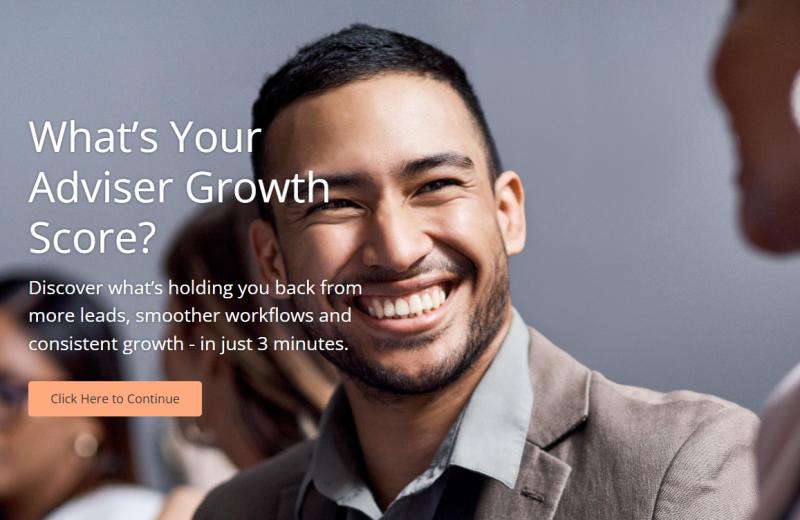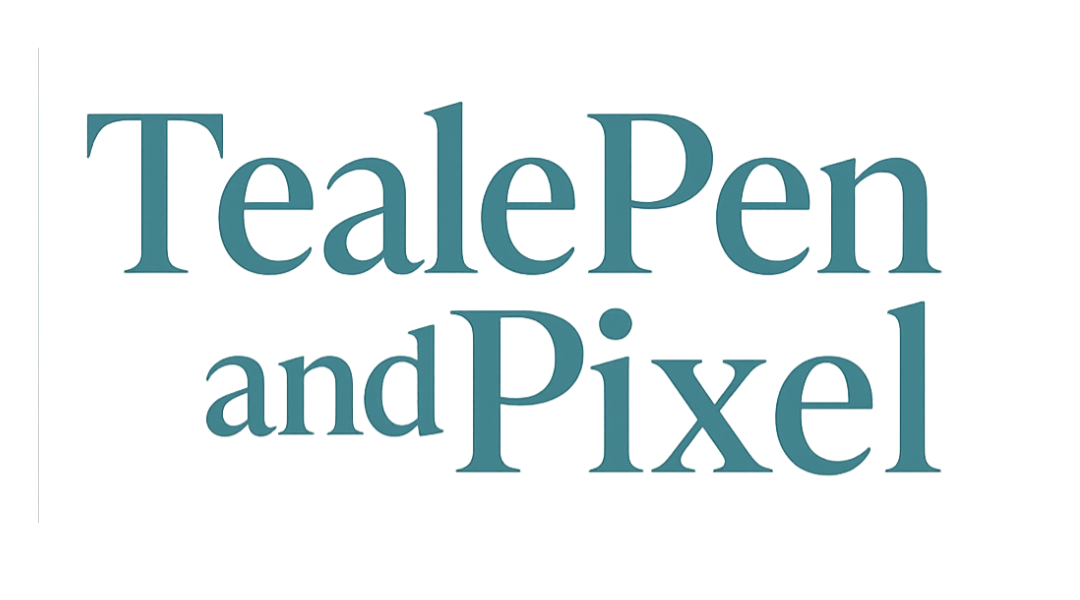Key Takeaways
Are you frustrated with lead generation as a financial adviser? You are not alone.
If you’re spinning wheels with trying to get leads, there is good news. With the right plan, you can boost qualified inquiries, build meaningful client relationships and automate your outreach.
TLDR: Here are my six most actionable tips for getting more financial advisor leads in 2025:
- Optimise your website for trust and speed. Focus on mobile-first design. Keep load times under 3 seconds, Keep your navigation intuitive.
- Offer resources that answer real questions and offer tangible value. Blogs are great. In 2025, videos are usually even better.
- Really focus on building your email list. Use smart lead magnets, opt-ins and automated drip campaigns. Segment your list by financial stage or interest to get your conversion rates above 20-30%.
- Show up consistently on the right social media. LinkedIn is great for advisers in 2025. Use a blend of educational, human and promotional posts to spark organic conversations and direct inquiries.
- Create irresistible lead magnets such as calculators, webinars or guides that solve your audience’s top pain points. With so many generative AI and “vibe coding” tools now available, this has never been faster (and easier).
- Automate your lead nurturing funnel with modern CRMs, behavioral triggers and dynamic sequences. This ensures fast, personal follow-up and lets your pipeline work while you sleep.
I’ve written each strategy for real-life applications. So, whether you’re upgrading your site or launching a fresh lead magnet, you’ll start seeing fast marketing results for your advisory firm.
Dive into the full guide to see practical examples and action steps for every tactic.
Financial Advisor Leads – Where Are They?
When it comes to lead generation, why do some financial advisors seem to do so well, whilst others struggle?
Just last week, I spoke with an Australian financial advisor called Marcus who had just started out. His firm had managed to gain 26 new clients in 5 months (starting from zero).
When I asked him what had worked so well for him, the answer was revealing:
“Honestly couldn’t tell you what has & hasn’t been working. Have no data on my posts on LinkedIn & TikTok. But just word of mouth. Doing good work. Then people coming to our website to book in an Intro chat with us. I just post everyday on a topic relating to money 💰. Nothing special.”
This should encourage you. It shows that online marketing for advisors (and social media marketing for advisors) is possible.
But it also highlights a problem that I’ve seen repeatedly over my 10 years working with financial advisors. Most are “feeling through the dark” when it comes to marketing and lead generation.
They don’t really know what’s working, and what is not. They don’t have data, or a clear strategy.
That’s where you can seize the opportunity. With a good plan, motivation and discipline, your financial advisory practice could truly stand out and make its mark in the digital landscape.
#1 Lay the Foundation: Website Optimisation and SEO
Only 30% of advisors are generating more than 0-1 leads per month from their website. But that isn’t because clients aren’t searching for advisors online.
It’s because most websites are not set up for financial advisor lead generation. Many are slow, outdated or confusing. The layout doesn’t fit on a mobile device. The content is stale.
That’s good news for you. It gives your website the potential for a direct competitive edge.
Picture this: a potential client lands on your homepage, and everything feels seamless, credible and reassuring within seconds. The prospect feels instantly connected and reassured.
As a result, they fill out the contact form and …boom. You’ve got yourself a lead.
Not sure if this really works? Here’s a screenshot of a financial advisor website I’ve worked on recently (Google Analytics, Traffic Acquisition report):
See that first row that says “Organic Search”? That’s the Google search traffic (organic, not paid). On the right, there is a column called “Key Events”. Those are the contact form submissions.
In short, this financial advisor is getting over 4 leads per month from their website. And look at the traffic – over 1,200 monthly sessions! They could be getting a lot more with some optimisations.
So, what can you do right now, to boost your website for online marketing? Prioritise:
- Fast load times: Aim for under three seconds—site abandonment rates spike by almost 40% after that.
- Mobile-first design: Over 60% of visitors are browsing from their phones.
- Intuitive navigation: Every page should be findable in two clicks or less.
- Professional branding: Clean visuals and consistent styling foster confidence.
#2 Create Magnetic Content
Seeing your name in Google results isn’t enough. Clients are searching for advisors who make complex financial ideas clear and relatable.
This is why your content is so important. It acts as a digital handshake, introducing your expertise while inviting real conversations.
In 2025, some formats are consistently outperforming others for financial advisors.
- Blogs that address client questions and timely market trends
- Videos explaining tax changes or investment basics in two minutes flat
- Podcasts interviewing guest experts or sharing real client success stories
- Infographics that visualise retirement milestones or portfolio rebalancing cycles
- Gated resources like checklists, calculators or case studies in exchange for a lead’s email
It’s important to stay relevant, and that means thinking ahead. A simple content calendar can help you:
- Map weekly topics to your top audience questions
- Schedule evergreen guides alongside fresh commentary on news events
- Allocate time for revisiting your top-performing pieces every quarter
Don’t cut corners with your content. Great advisors don’t set and forget. Instead:
- Schedule quarterly reviews to update numbers, regulatory notes or call-to-actions (CTAs)
- Analyse which topics drive the most downloads or email captures. Double down where you see results
- Borrow inspiration from leaders – e.g. their calculators, quizzes and practical guides
Optimise your content for clarity, action and easy consumption. This helps to position you as the go-to expert – making every word part of a trust-building journey that turns browsers into quality leads.
Think about how to make your content fun, tapping into human psychology using gamification.
For inspiration, see this example of how I do this with financial advisors (my free 3-min Advisor Growth Score):

#3 Nurture and Convert …With Email Marketing
Email marketing for financial advisors isn’t going anywhere in 2025.
Nearly 60% of advisors report email as their most consistent source of digital leads, with drip campaigns automating much of the heavy lifting.
A well-designed list is the beating heart of your email strategy. Growing it starts with ethical subscriber attraction:
- Use website pop-ups strategically, featuring value-heavy offers (think: free retirement checklists)
- Add opt-in boxes to every high-traffic resource – blogs, calculators, webinars
- Offer content upgrades in your articles for instant sign-ups
Generic email blasts? Don’t try it. Today, the best results come from smart segmentation, such as:
- Sorting contacts by financial stage (accumulation, retirement, legacy)
- Tracking engagement—openers, clickers, and ghosters get different content
- Grouping by expressed needs: market volatility concerns, tax efficiency, family planning
Set your flow once, then let tech do the rest. For instance, modern tools let you design drip campaigns that send welcome notes, educational resources and calendar invites – all in sequence.
You can even personalise your advisor email marketing using behavioral triggers – e.g. when a user visits your ‘Retirement’ page, cue a targeted email series.
Some of the best campaigns for advisors include:
- Monthly market updates with clear referral asks
- Drip series guiding newcomers from hello to scheduled call in under two weeks
- Automated “referral loop” emails rewarding introductions with timely thank-yous
Smart, segmented, and automated email marketing moves leads forward – at scale and on autopilot.
#4 Build Strategic Relationships with Social Media
I’ll just say it. Most social media marketing for advisors is all wrong.
They post once or twice a year from a poorly-designed LinkedIn profile about a boring company update, and wonder why they only hear crickets.
This is great news for you. If you can work with the algorithms in 2025 and put in the hard work, you could see some amazing results – like Marcus, that advisor I mentioned earlier.
He didn’t know why he was succeeding in social media marketing for advisors. But as a marketer for financial services, I could see some tell-tales signs:
- He had a great profile, with a professional headshot in branded colours.
- He had an attention-grabbing headline (think: “I help business owners retire tax-efficiently”)
- He had streamlined contact options (Calendly links or direct message prompts)
For Marcus’ target audience, it was immediately clear who he was, what he offered, and how to reach out.
He was also regularly PRESENT on the platform, asserting thought leadership by:
- Posting Q&A video snippets—answering real client questions on camera
- Weighing in on news with fresh commentary (“Here’s what today’s interest rate move means for your portfolio”)
- Commenting on other posts and showing his human side.
Smart advisors treat social media as a landing page. Their profile isn’t just a shop window. It’s an asset geared towards driving action – e.g. inviting a conversation, downloading a resource, and so on.
I’ve crafted my own LinkedIn profile in the same way. For inspiration, click the image below to check it out (and feel free to connect!):
#5 Target and Accelerate with Paid Advertising
When should you pull the trigger on paid ads?
This is an advanced technique. You’ve got to be SO careful here. I remember once speaking with a financial advisor years ago, who had set up a Google Ads campaign by themselves.
£20,000 spent on ads, with nothing to show for it.
No leads, just a lot of clicks, traffic and noise.
Paid ads are like fuel on a fire. They can make something more powerful or destructive, depending on what you start with (i.e. your offer).
For instance, if you publish a LinkedIn/Facebook post and you get a lot of positive engagement from other users, “boosting” it can accelerate that further.
However, boosting a poorly-performing post will not make things better. It could make things worse.
In 2025, there are many options for financial advisor PPC (pay per click) advertising:
- Google Search (PPC): Attracts prospects actively searching for financial advice with intent-rich keywords and geo-targeted ads.
- Facebook and Instagram Ads: Great for demographic targeting and creative storytelling. Helpful for reaching younger investors or niche audiences.
- TikTok Ads: Some advisors now report new HNWI leads from TikTok. An emerging trend to watch if you’re looking for fresh ground, but not one I’d personally recommend.
The cost per lead (CPL) varies across industries, platforms and geographies. But here is a general ballpark of what to expect:
- Google Ads: $56.11 for search ads, $90.80 for display ads.
- Facebook Ads: $18.68 depending on placement, audience targeting etc.
- Instagram: $25.00, and relies on very visual elements.
- LinkedIn: $75.00, very competitive due to the professional audience.
Getting the clicks on your ad is just step one. To actually convert, focus on:
- Landing pages that speak directly to your audience’s pain points (think: “Plan your retirement in three easy steps.”)
- Fast load times and zero distractions (no random links pulling visitors away)
- Clear, compelling CTAs (“Book Your 30-Minute Strategy Call Today”)
Watch out for:
- Overbroad targeting (leads aren’t leads if they’re not a fit).
- Weak compliance processes. Every ad, landing page and form must clear regulatory hurdles.
#6 Build Automated Funnels for Scalable Lead Nurturing
Picture this: a prospective client lands on your website, downloads a guide and receives a perfectly-timed email – all without you lifting a finger.
That’s the power of an automated marketing funnel. It streamlines the journey from anonymous visitor to booked appointment, boosting lead conversion even while you sleep.
To build an effective funnel, you’ll want a clear path:
- Attract: Capture interest with gated content or lead magnets
- Engage: Trigger personalized follow-ups via email or SMS
- Nurture: Send value-driven content to address common pain points
- Convert: Automate appointment scheduling when interest peaks
Modern advisors are leveraging some must-have tools for smart automation:
- CRM platforms for tracking leads
- Automated scheduling tools (e.g. Cal.com) to eliminate the back-and-forth
- Intelligent email automation (MailerLite) for drip sequences
Combine these and you’ve got a lead-gen machine that runs 24/7 – but still feels personal.
It’s important to not let hot opportunities slip through the cracks. This is where lead scoring and dynamic sequences can shine through:
- Assign lead scores based on actions (downloads, clicks, replies)
- Route segmented leads into tailored nurture tracks
- Use behavioral triggers to prompt timely human outreach
Finally, it’s vital to balance automation with a human touch. Automation shines when it supports (not replaces) relationship-building. As such:
- Make sure your personalise subject lines and email intros using recipient data
- Set up alerts so you (or your team) can jump in at key buying signals
- Review funnel messages quarterly to keep them warm and relevant
When set up thoughtfully and reviewed regularly, automated funnels will accelerate your bookings while keeping your brand voice truly human.
Conclusion
Growing your financial advisory business in 2025 isn’t about chasing every new marketing trend. It’s about using the right mix of proven tactics that consistently attract, nurture and convert quality leads.
With the strategies you’ve just explored, you’re not just keeping up. You’re building a competitive edge tailored exactly for advisors who value both smart tech and personal touch.
Here Are Some Moves You Can Put Into Play Right Now:
- Upgrade your website for speed, clarity and mobile usability so prospects trust you from click one.
- Deliver magnetic content in diverse formats (blog, video, checklist) that solves real client problems and sparks conversation.
- Build email campaigns that segment and nurture. Speak personally, automate the routine and always keep compliance top of mind.
- Invest in strategic paid ads or lead magnets only after your organic channels are converting, so every dollar fuels real pipeline growth.
- Automate your follow-up and lead nurturing, but keep your humanity at the core. People still choose advisors, not just funnels.
—
Ready To Move From Learning To Action?
- Pick one tactic you haven’t mastered (just one) and schedule time this week to start implementing or optimising it.
- Set up a 15-minute diagnostic on your top lead source (website, email or social profile) and identify one upgrade you’ll make.
- Connect with a peer or coach who can hold you accountable for progress, and celebrate every breakthrough.
—
Build trust. Deliver value. Outperform expectations – one lead at a time.
Thanks for reading. And, in case you missed it, try my Advisor Growth Score below. It’ll give you a clearer view of your marketing strengths and weaknesses as an adviser, in just 3 minutes:

Philip Teale is a MCIM marketer with over 10 years’ experience working with financial advisors – helping them gain new revenue and clients using online channels and AI-powered workflows.

